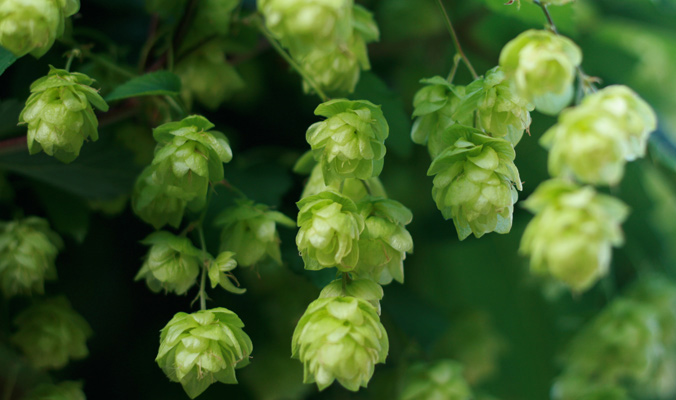Some things just go together, like dive bars and ski bums, spring days and one-piece ski suits. We’ve applied that philosophy to this year’s Beer Guide, pairing 18 craft beers from around the country with how best to enjoy them—whether that’s hydrating throughout the day or being the guy who takes an Uber home from the tailgate. We’ve considered flavor, ABV, packability and skintrack cred to present the hoppiest, headiest and most satisfying beers—and how to fully drink them up.
When brewers talk hops, they’re referring to the flowering cone on the plant Humulus Lupulus, a perennial vine. Hops are dried and added to beers for flavor and stability, and overtime they’ve been cultivated to create a range of tastes. Here’s a rundown of popular U.S. varieties.

The bitter bud. [Photo] Paul Miller
Chinook: Known for its spicy and strong piney flavor, the Chinook hop was released in Washington and Idaho in the spring of 1985. Used in most beers, from lagers to pale ales.
Amarillo: This hardy variety of hops can be used as a substitute for Cascade hops, as it has a similar citrusy, flowery flavor without too much bitterness. Used in IPAs and ales.










Related posts:
Are You Smarter Than a Hipster? Small-scale breweries and their differences
Beer Guide 2017: A Bitter Breakdown
How world-champion freeskier Alison Gannett slashes glass ceilings
In an age of same-day delivery by drone, will small-town ski shops stick around?